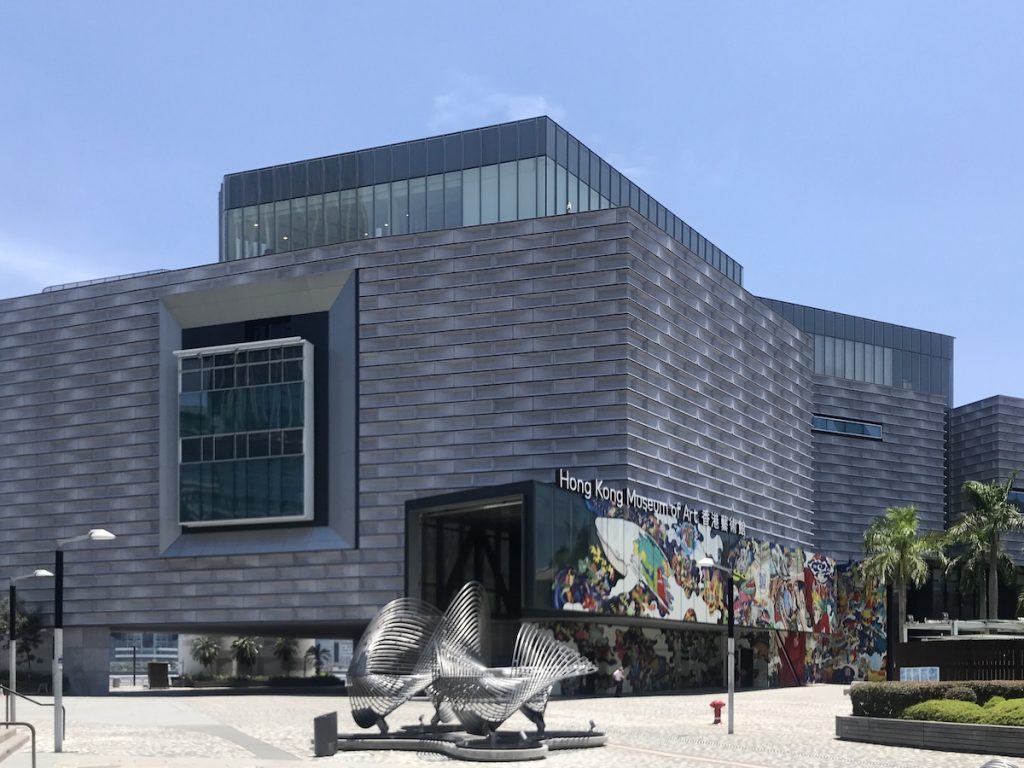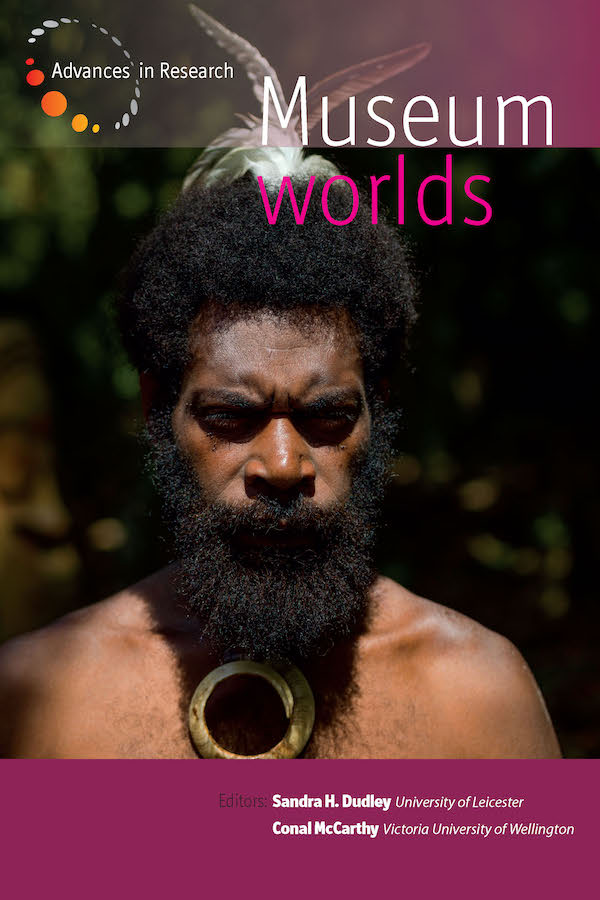by Joanna Cobley and Conal McCarthy
Researchers at all stages and levels are encouraged to publish. Academic publications, including Museums Worlds: Advances in Research, undergo a peer review process. The purpose of peer review is to ensure research integrity while encouraging new ideas, knowledges and experimental methods to emerge. In fact, peer review fosters researcher development for the researcher and reviewer, and for the entire publishing team working behind the scenes, including the journal editors, copyeditors and publishing house editors. As a result, peer review develops a dynamic community of practitioners.
Like everything else in the museum and academic world however, all these editorial practices are cultural and historical. They are made, constructed, and can therefore be unmade and remade. Conventions change to reflect and adapt to a changing world. And we don’t need to tell you how much our world has changed in the last 18 months: with the pandemic, the climate crises and #BlackLivesMatter. Given that this journal aims to genuinely engage with global museology and address the Anglophone bias of museum studies and practice by opening its pages up to a diversity and range of voices and content, then acknowledging and making room for issues of race, culture, language and different perspectives is paramount, not least for the task of decolonization.[1]

Over the last year we have been engaged in a parallel process of reviewing and expanding the editorial framework of the journal alongside our publisher Berghahn, and actively trying to bring in a greater variety of material from outside the Anglo-western European-American axis: in the last couple of issues we have had writers from China, Hong Kong and Japan, South America, Africa, southern, central and eastern Europe, and Australia, New Zealand and the Pacific. Many of these writers are from Non English Speaking Backgrounds, or write in local varieties of English inflected by indigenous languages, different orthographies or scripts.
This blog post reflects on this experience in light of the theme of “identity” in peer review; our examples explore the concept of “fostering new voices” alongside important researcher development principles such as maintaining research integrity, professional courtesy and fairness, and promoting good stewardship.[2]
At Museums Worlds, we understand that doing research can be an isolating activity; however, once the peer reviewers, editors and copyeditors engage with your research, it makes the experience rewarding as it leads to the best possible output for readers. Having your research scrutinized requires shifting your author identity from “me” to a collective “we” working in partnership with the journal; remember your peer reviewers contribute different knowledge and skills to the project. They should be trying to help you make your research and writing the best it can be through constructive feedback.
Nonetheless, peer review as we know it today is a recent practice, becoming more popular since the 1970s.[3] Prior to that, journal editors decided on content. As the practice matures, there is scope to change.
How does one get training in peer review? Looking around, you can find guidance targeted at individual, community, institutional, national and global level. Individual researchers mentor others, research communities through their specialist journals can provide opportunities, and institutional policies, national codes and international statements offer a useful framework for navigating matters related to research integrity, professional fairness, and good stewardship across all research disciplines. For example, The Australian Code for the Responsible Conduct of Research, 2018, co-developed by the Australian Research Council, the National Health and Medical Research Council and Universities Australia covers topics such as peer review, disclosure of and management of conflicts of interest, as well as publication and dissemination of research.[4] These guiding documents state that institutions have responsibility to provide ongoing training and education for researchers and those in relevant roles. In addition, individuals should take responsibility for seeking training opportunities where they perceive a knowledge gap. Particular emphasis was made for training early career researchers[5] and postgraduate students on all aspects of peer reviewing from grant applications to dissemination.[6]
At the close of 2020, against the backdrop of the #BlackLivesMatter movement, increasing social inequity and dramatic climate change events, Berghahn encouraged its journal community to experiment and find ways to foster new voices in their 2021 content.
Berghahn wasn’t the only publisher caught up in this moment focused on fostering new voices. During times of great change and uncertainty, new voices provide novel perspectives that may help solve very old systemic problems. For example, museum researcher-activists Diane Drubay and Asha Singhal (2020) argue that museums are facing a big identity crisis. Drubay and Singhal are part of the WeAreMuseums[7] movement; their solution to this identity crisis involves the whole museum community engaging in vibrant, diverse dialogue. As Drubay explains, where “change is the only constant in life, we cultivate new ways of talking to each other, thinking and working together in order to give the opportunity to museum professionals to experience and embody change (Drubay and Singhal 2020: 665).[8]
The “Research in Other Forms” section of this year’s Museum Worlds 9, while published in English, has a global focus and includes new voices from authors capable of moving from their mother tongue to writing in academic English. Our journal, like many others, is reliant on the skills of its reviewers and contributors, and these can be hard to find when so many academics and students are busy teaching online and when museum professionals are tied up keeping their institutions afloat. The co-author and monolingual New Zealand-based reviews editor focused on mentoring emergent Māori and Moana Oceania contributors writing about Māori and Moana Oceania content, drawing from specific regional indigenous knowledges, terms and ways of expressing themselves. Here language intertwines with identity. Therefore, the journal’s style guide requesting translations of “foreign” terms which were italicized, unlike in New Zealand English and publishing, stimulated dynamic email correspondence and telephone conversations between the reviewing team and Māori and Moana Oceania contributors.
In Hollie Tawhiao’s (Ngaati Tiipa) exhibition review, E Hina e! E Hine e! Mana Waahine Maaori/Maoli of Past, Present and Future held at the Waikato Museum / Te Whare Taonga o Waikato, Hamilton, from 14 September 2019–10 October 2021, she explains in a footnote how she “used double vowels in te reo Maaori (the Maaori language) to represent a long vowel sound, as it is the preference of the Waikato-Tainui iwi (tribe). However, some names, titles, and words in the Hawaiian language are shown with macrons.”[9] The title proved a challenge, as Tawhiao needed to resist calling it an exhibition review of Māori women’s art. The aim of the exhibition, as interpreted by the three women curators, is to present staunchly (regional Waikato) Maaori and Kanaka Maoli images and ideas of Maaori and Kanaka Maoli women through time.[10]
Another form of identity politics emerged with Riria Hotere-Barnes’ (Ngāti Maniapoto, Te Aupōuri, Te Rarawa, Ngāti Wai) exhibition review titled: Brett Graham: Tai Moana, Tai Tangata, Govett Brewster Art Gallery, New Plymouth, 5 December 2020–2 May 2021.[11] The work of artist, Brett Graham (Ngāti Koroki Kahukura), expresses te ao Māori and Māori experiences; even the exhibition labels were written in Te Reo Māori which was not a parallel translation of the English text. Because of these cultural politics, many Maōri terms have no gloss provided in the review, requiring extra attention at the copyediting stage to prevent a disorienting read for anyone not familiar with New Zealand. Mindful of the international audience, the author’s aim was to provide enough context to render translations unnecessary. This was an interesting challenge indeed, because in accommodating one audience, we alienate another. As Hotere-Barnes said: “the time has come to privilege the voice of indigenous artists, writers and readers. Such was the theme of the exhibition I reviewed, and I wholeheartedly agree with the artist.”[12]
The last example, from Museum Worlds contributors Toluma’anave Barbara Makuati-Afitu and Kolokesa Uafā Māhina-Tuai, offers a Moana Oceania perspective, where talanoa (“talking critically yet harmoniously”) is part of the research process. The authors challenge Moana Oceania peoples not to conform to stereotypes of the Western status quo and embrace “the fine art of talanoa as a refinement tool for robust discussion and debate for the betterment and well-being of our Moana Oceania communities as a whole.”[13] The process of translation and cross-cultural encounters requires particular care, especially in using the correct diacritical marks for the glottal stop for Tongan and Sāmoan words.
These examples served to demonstrate the exciting, evolutionary process of peer review while navigating matters related to research integrity. Journal peer reviewers, including its commissioning reviews editors, have a pivotal role in ushering in these fresh new voices. As Museum Worlds enters its second decade, plans for 2022 include transferring the translated exhibition review model to the book reviews section. Translated book reviews and reviews in English of books published in other languages are just one-way to bring previously excluded voices into the greater global community. In changing museum studies and museums, we hope that we can better shape and be shaped by our changing world.
Joanna Cobley (University of Canterbury Te Whare Wānanga o Waitaha) and Conal McCarthy (Victoria University of Wellington Te Herenga Waka) are reviews editor and editor for the Berghahn journal Museum Worlds: Advances in Research, a multidisciplinary, refereed, annual journal that publishes work that significantly advances knowledge of global trends, case studies, and theory relevant to museum practice and scholarship around the world. The journal is published Open Access as part of the Berghahn Open Anthro subscribe-to-open initiative. For updates and more information about the journal, please join our mailing list.
[1] Brulon Soares, Bruno, and Anna Leshchenko. 2018. “Museology in Colonial Contexts: A Сall for Decolonisation of Museum Theory,” ICOFOM Study Series (46): 61-79. https://doi.org/10.4000/iss.895. http://journals.openedition.org/iss/895 (accessed 15 September 2021).
[2] See for example, the Singapore Statement on Research Integrity. Developed in 2010 and serving as a global guide, the Singapore statement promotes four principles and 14 responsibilities considered essential to research integrity worldwide, https://www.jsps.go.jp/english/e-kousei/data/singapore_statement_EN.pdf (accessed 15 September 2021).
[3] “Peer Review – A Historical Perspective,” Broad Institute, Peer Review – A Historical Perspective : Broad Institute of MIT and Harvard (accessed 16 September 2021).
[4] The Australian Code for the Responsible Conduct of Research, 2018, https://www.nhmrc.gov.au/about-us/publications/australian-code-responsible-conduct-research-2018 (accessed 16 September 2021).
[5] Some jurisdictions use seven years to differentiate the border between early career and established researchers, see: Sue Tangney and Claire Flay-Petty, “Developing Early to Mid-career Academic Staff in a Changing University Environment.” All Ireland Journal of Teaching and Learning in Higher Education 11, 1 (Spring 2019): 1–15.
[6] Peer Review: A guide supporting the Australian Code for the Responsible Conduct of Research (National Health and Medical Research Council, Australian Research Council and Universities Australia: Commonwealth of Australia, Canberra: 2019), p2.
[7] WeAreMuseums, https://wearemuseums.com/museums-facing-crisis (accessed 16 September 2021).
[8] Diane Drubay & Asha Singhal, “Dialogue as a framework for systemic change,” Museum Management and Curatorship 35, 6 (2020): 663-670, DOI: 10.1080/09647775.2020.1837001
[9] See: https://waikatomuseum.co.nz/exhibitions-and-events/view/2145883308
[10] Personal email communication between Reviews Editor and author, 11 September 2021.
[11] Link to virtual tour: https://govettbrewster.com/virtualtours/
[12] Personal email communication between Reviews Editor and author, 23 August 2021.
[13] Lagi-Maama Academy and Consultancy (Toluma’anavae Barbara Makuati-Afitu and Kolokesa Uafā Māhina-Tuai), “‘Talking Critically Yet Harmoniously’: It is in our Bloodlines as Moana Oceania Peoples,” Museum Worlds, 9 (2021): 114.

